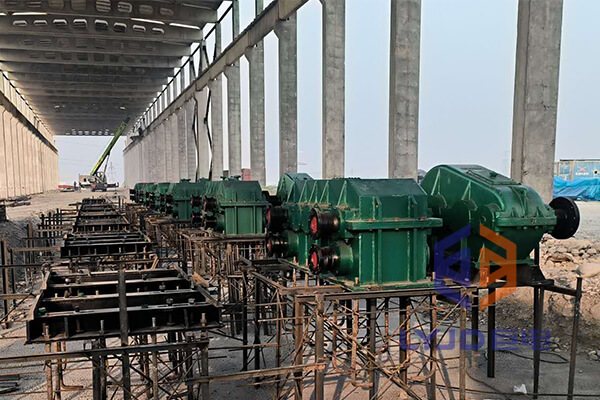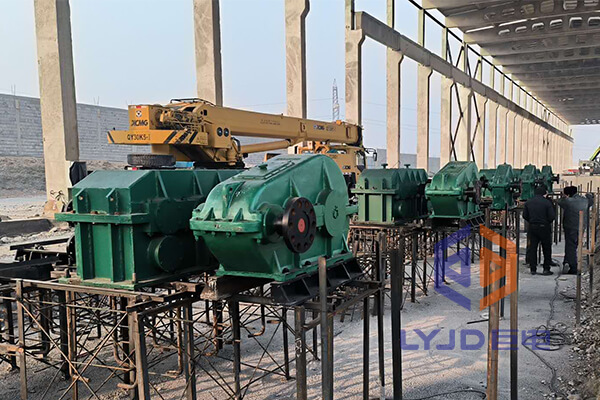Tandem rolling mills play a crucial role in the metalworking industry, especially in the production of bars. In this article, we will take a closer look at the journey of metal from billets to bars in a tandem rolling mill.

We will explore the various stages involved in the process and understand the significance of each step.
Before entering the tandem rolling mill, the metal starts its journey as a billet. Billets are semi-finished metal forms that are typically square or rectangular. At this stage, the billets are inspected for any defects or surface imperfections that may affect the quality of the final product.
To enhance the malleability of the metal, the billets are heated to a specific temperature in a billet heating furnace. This process, known as preheating or conditioning, helps reduce the force required during the rolling process and ensures uniformity in the material's properties.
Once the billets are heated and ready, they are fed into the entry section of the tandem rolling mill. The entry section consists of various mechanisms that guide and position the billets for the rolling process. This stage is crucial for maintaining proper alignment and ensuring a smooth flow of material.
In the reduction stage, the billets undergo a series of rolling passes through multiple stands of the tandem rolling mill. Each stand applies pressure to the metal, gradually reducing its thickness and increasing its length. The number of stands and the reduction ratio depend on the desired final dimensions of the bars.
After the rolling process, the bars are rapidly cooled to prevent any structural changes or distortions. This cooling process, often achieved through water sprays or air jets, helps in stabilizing the material and improving its mechanical properties. The bars are then cut to the desired length and inspected for any surface defects.
Throughout the journey from billets to bars, quality control measures are implemented at various stages. Non-destructive testing methods, such as ultrasonic or magnetic particle inspection, are used to detect any internal or surface defects. Additionally, dimensional checks and visual inspections ensure that the bars meet the required specifications and standards.
The structure of tandem rolling mills can vary depending on the specific design and requirements. However, here is a general overview of the typical structure of tandem rolling mills.
The entry section of a tandem rolling mill is where the billets or raw materials enter the mill. It consists of mechanisms such as roller tables, conveyors, and guides that position and feed the billets into the rolling process. The entry section also includes mechanisms for aligning and centering the billets to ensure a smooth and controlled entry into the mill.
Tandem rolling mills consist of multiple stands arranged in a line. Each stand performs a specific reduction operation on the billets. The stands are typically numbered sequentially, starting from the first stand closest to the entry section. The number of stands can vary depending on the desired reduction ratio and the final dimensions of the product.
Each stand in a tandem rolling mill contains a set of rollers that apply pressure to the billets. The rollers are usually made of high-quality steel and can have different diameters and configurations depending on the rolling requirements. The rolls can be arranged in various configurations, such as a two-high, three-high, or four-high arrangement, to achieve the desired reduction and shape control.
Interstand guides are used to control the movement and alignment of the billets between the stands. They ensure that the billets maintain the correct position and orientation as they pass through each stand. Interstand guides can be mechanical or hydraulic and are essential for maintaining the accuracy and stability of the rolling process.

The number of rolling stands in a tandem rolling mill for rebar production depends on several factors. Here are some key considerations that can help in deciding the appropriate number of rolling stands.
The desired production capacity is a crucial factor in determining the number of rolling stands. Higher production rates generally require more stands to achieve the desired output. The number of stands should be to balance productivity with other factors like space availability and investment costs.
The reduction ratio refers to the amount of thickness reduction achieved in each pass through the rolling stands. It depends on the initial billet size and the desired final rebar dimensions. A higher reduction ratio may require more rolling stands to achieve the desired final dimensions, while a lower reduction ratio may require fewer stands.
The properties of the material, such as its strength, ductility, and workability, can influence the number of rolling stands. Harder materials may require more stands to achieve the desired reduction and shape control. Softer materials may require fewer stands, but for better control over the final product's dimensions and surface quality, we may need more stands.
The number of rolling stands also affects the control over the shape and size of the final rebar product. More stands generally provide better control over the dimensions, shape, and surface finish of the rebar. If precise shape and size control are critical, a higher number of stands may be necessary.
The available space and the capacity of the rolling mill equipment can also influence the number of rolling stands. Therefore, the layout and design of the mill, as well as the size and capacity of the stands, are the key factors to ensure efficient operation and optimal use of the available space.
Tandem rolling mills play a pivotal role in transforming billets into high-quality bars. The journey involves careful preparation, heating, precise reduction, cooling, and rigorous quality control. Understanding the intricate process and the significance of each stage helps in appreciating the craftsmanship and engineering behind the production of bars in tandem rolling mills.
Please send us your request and we reply to you with in 24 hours.
Submit Request